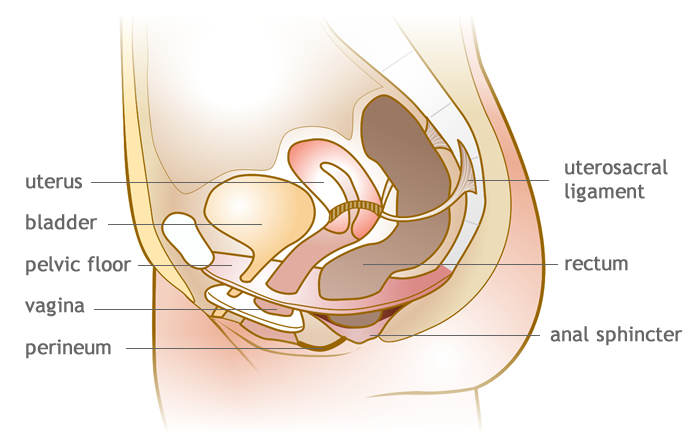Pelvic Anatomy

Pelvic floor muscles play an important role in bladder and bowel functions. As seen in the diagram, your pelvic floor musculature is located at the base of your pelvic region, controlling your bladder, bowels, and vaginal area.
Problems can occur with pelvic floor muscles due to a number of reasons. Pregnancy, childbirth, repeated strain on the pelvic region (for example, from heavy lifting or straining during bowel movements due to constipation), excessive weight, and age all can be factors in weakened or damaged pelvic floor muscles.
Problems with pelvic muscles then can lead to urinary problems, bowel problems, and pelvic prolapse. Pelvic floor muscles can also be affected by interstitial cystitis and vulvadynia.
Pelvic Anatomy
Pelvic floor muscles - A group of muscles in the pelvis that support and help to control the vagina, uterus, bladder urethra and rectum
Bladder - A muscular organ which stores urine
Ureters - A pair of tubes, each leading from one of the kidneys, to the bladder
Urethra - A short narrow tube that carries urine from the bladder out of the body.
Voiding - Passage of urine out of the body
Pelvic Prolapse Disorders
Cystocele - Prolapse or bulging of the bladder into the vagina
Rectocele - Prolapse or bulging of the rectum into the vagina
Enterocele - Prolapse or bulging of the small intestine into a space between the rectum and vagina
Uterine prolapse - Prolapse or descent of the uterus into the vagina




